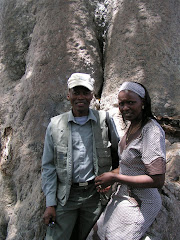1.0 Introduction
The delegates representing 16 countries in the Eastern and Southern Africa region, gathered at Sunbird Hotel in Lilongwe, Malawi from 24 - 27 August 2009 on the invitation of the Malawi Government in collaboration with the UNICEF Regional Office in Nairobi to discuss justice for children in the region and reach a common understanding through dialogue, mapping of systems and sharing of information on best practices. In this report we highlight objectives of the meeting, its outcomes, presentation by country delegates, the Botswana priorities, Lilongwe Commitment on Justice of Children and Recommendations on the Way forward.
2.0 Objectives of the meeting
The Eastern and Southern Africa Regional meeting focused on achieving a common understanding amongst Government stakeholders on Justice for Children and its importance to fulfill their obligations under the United Nations Convention on the Rights of the Child (UNCRC) and the African Charter on the Rights and Welfare of the Child (ACRWC). The focus included recognition of the importance in relation to the Rule of Law, Safety and Security within their states, the achievement of the Millennium Declaration towards reaching the MDGs, as well as its importance towards the overall state development. The Africa Child Well-being 2008 Report shall be launched and shared with stakeholders and participants.
3.0 Expected Outcomes
The expected outputs of the meeting include the following:
1. A map of the justice systems in each participating country with highlights of gaps and systematic issues;
2. A matrix of 5 priority interventions per country over the next 2 years to address the gaps and inefficiencies within national systems that hamper justice for children;
3. A regional statement of common priorities and supported needed;
4. Share the African Well-being Report.
4.0 Background Information
Justice for children is an approach to child justice that focuses on the child’s rights. It means that official actions affecting a child needs to be child friendly, in accordance with prevailing legal frameworks and not in violation of the child’s fundamental human rights as an individual, as well as a child. It puts the child in the center of the justice system and realizes that children require the sort of care and protection that adults do not. A child has special needs and need special provisions that recognize those needs and take them into consideration. A majority of children in conflict or contact with the law have a personal history of abuse, exploitation, poverty, abandonment or drug addiction. These children need help and support, rather than to be punished by a justice system constructed for adults and often poorly prepared for handling children. This includes all children in contact with the law, i.e. child victims, witnesses as well as offenders. The development over the last two decades shows us that justice for children initiatives are being developed with increased frequency when more countries are putting justice for children on the agenda. However, there are still many hurdles to overcome. Implementing CRC child justice provisions faces states with problems and the CRC Committee comments repeatedly on the need of better compliance. Continued development is critical.
All the countries in the Eastern and Southern Africa are State Parties to the Convention on the Rights of the Child with the exception of Somalia, and all but three ( Somalia, Swaziland and Zambia) have ratified the African Charter on the Rights and Welfare of the Child.
The CRC and the ACRWC is binding for all its State Parties and the most fundamental legislation constituting the civil, political, economic, social and cultural rights of all children. Both frameworks recognize that people under 18 years need special care and protection that adults do not. This includes all children in contact with the law; the ones who are victims, witnesses of crime or offenders themselves.
Child justice systems are limited to non-existent in all the countries in the region, even though the commitment made by State parties when ratifying the CRC obligates them to provide for special provisions for children in conflict with the law. Adult criminal systems do not take factors like the child’s age, their vulnerability and special needs into consideration.
Child justice systems have a history of primarily focusing on child offenders with little or no attention to child victims or witnesses. In 2005 however the UN adopted the Guidelines on Justice in Matters Involving Child Victims and Witnesses of Crime, to ensure child victims and witnesses are treated fairly and to further enhance their protection when in contact with the law. For the first time, these guidelines provided an international standard and fortified the notion of the fact that justice for children is not only necessary for child offenders but also for child victims and witnesses.
In 2008, the UN Common Approach to Justice for Children was developed. The goal for the approach is to ensure that children are better served and protected by justice systems. It especially aims at ensuring full application of international standards for children in contact with the law and related state systems as victims, witnesses or alleged offenders, or in situations regarding care, custody or protection. The principles are based on international norms and standards and apply in all circumstances.
5.0 Country Presentations
Delegates presented country reports and identified gaps on justice for children. From the presentations it is apparent that child justice systems primarily focus on child offenders with little or no attention to child victims or witnesses and their protection.
6.0 Botswana Presentation
The presentation was based on the VISION 2016 Pillars in order to deal adequately with child justice. In Botswana the emphasis is on prevention rather than cure thus social justice plays a major part in molding children to be responsible citizens. The social safety nets have been put in place to safeguard the well-being of children so that they do not fall in the poverty trap and end up on the wrong side of the law. The number of children in need of protection is on the increase hence the need to:
• Strengthen collaboration with stakeholders, fast track the establishment of child protection units in the Police Service
• Increase knowledge and training among service providers through education i.e. police, magistrates etc on court procedures for child justice, laws and legal instruments on child protection.
• Explore the possibility of introducing diversion in our child justice system as an alternative to child criminal justice and sentencing.
• Inadequate probation and after care services.
• Establish child friendly courts
7.0 Botswana’s Priority Gaps for Intervention on Justice for Children
The gaps identified and considered as priorities for intervention were:
• Lack of child protection units in the Police Service
• Inadequate knowledge and training among service providers i.e. police, magistrates etc on court procedures for child justice, laws and legal instruments on child protection.
• No diversion as an alternative to child criminal justice and sentencing.
• Inadequate probation and after care services.
• Unavailability of child friendly courts.
8.0 The Lilongwe Commitment on Justice of Children and Recommendations on the Way forward
Towards the end of the meeting, it was apparent that the level of awareness, commitment of countries and progress made in the Eastern and Southern African region to develop child friendly justice and social systems were quite significant. On the basis of that, countries affirmed and made a commitment to;
1. Promote, encourage, support and facilitate the domestication of international agreements, legal reforms, and the formulation of appropriate and adequate legislation, policies, protocols, and strategies aimed at promoting justice for children. This includes children who come into contact with the traditional, formal and informal justice systems, whether as offenders, victims or witnesses in criminal and civil trials or victims of abuse, neglect, trafficking and exploitation as well as children who are participating in our parties to civil process relating to their care and protection.
2. Promote an enabling framework for cooperation on an Agency to Agency basis in sharing technical expertise in the improvement of access to age appropriate and empathetic justice systems for children in our countries in line and in compliance with the best interests of the child.
3. Promote inter-sectoral work in each country on costing, budgeting and implementation planning to support more efficient, effective and adequately resourced systems for justice for children.
4. Develop inter-sectoral aligned information management systems in relation to justice for children.
5. Enhance capacity for research, data capturing, intra-agency data sharing, monitoring and evaluation of the processes and systems that support justice for children.
6. Strengthen human resources to support child friendly delivery of justice for children by attracting, appointing and retaining adequate and appropriately skilled personnel, as well as facilitating capacity development by engaging in regular needs assessment for resource planning, providing ongoing training, and developing practice standards and manuals. Specialization and skills retention should be promoted while facilitating promotional opportunities for staff working with children in the justice and social systems;
7. Establish and strengthen national and international partnerships and, pledge to continuously forge and strengthen collaboration with all sectors of Civil Society, as well as inter-governmental organizations and development partners;
8. Promote the design and development of an accessible repository of good practices for the region to facilitate sharing of successful strategies and lessons learnt on processes and mechanisms for the implementation, strengthening as well as promotion of justice for children in the Eastern and Southern African Region and,
9. Communicate in the region through accessible mechanisms to exchange ideas, legal and policy frameworks, protocols, strategies, costing models, and procedural models.
Subscribe to:
Post Comments (Atom)











No comments:
Post a Comment